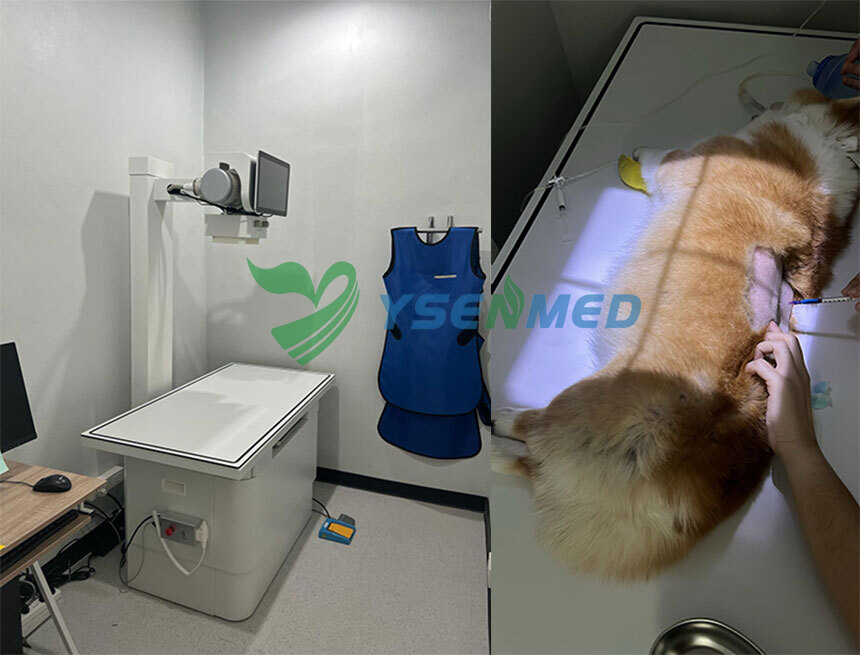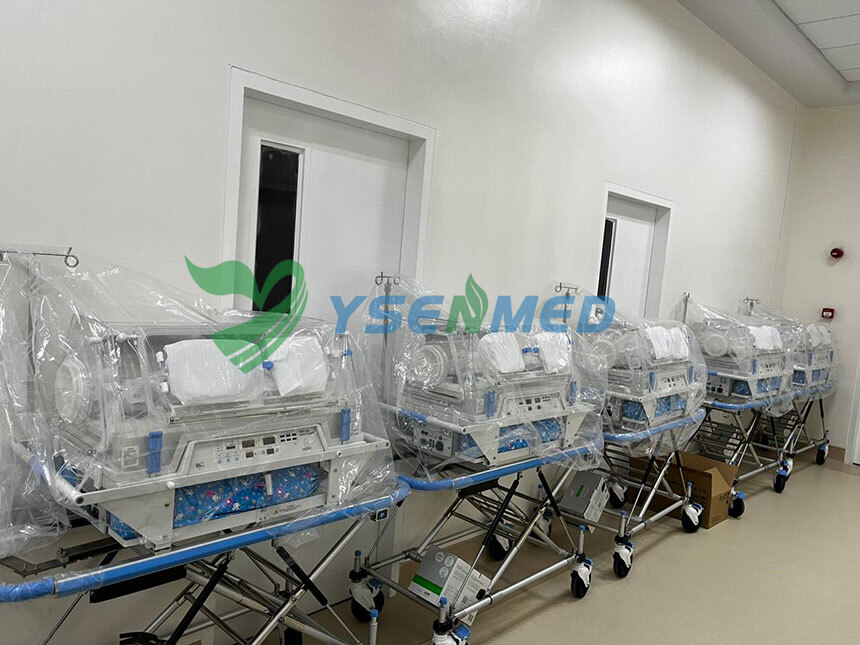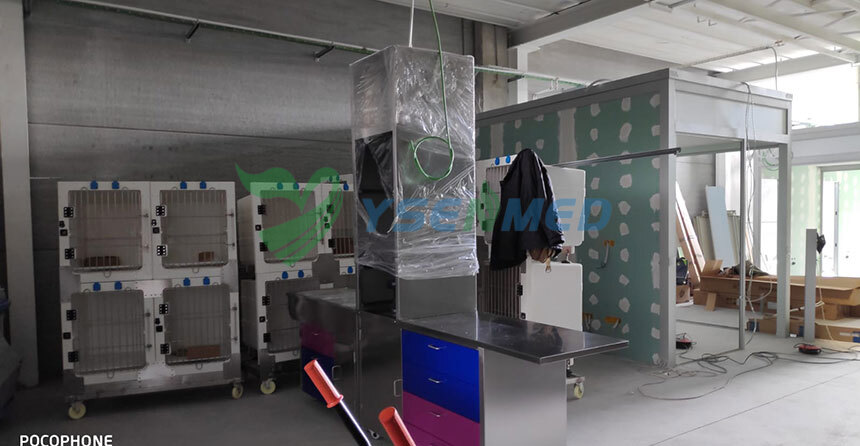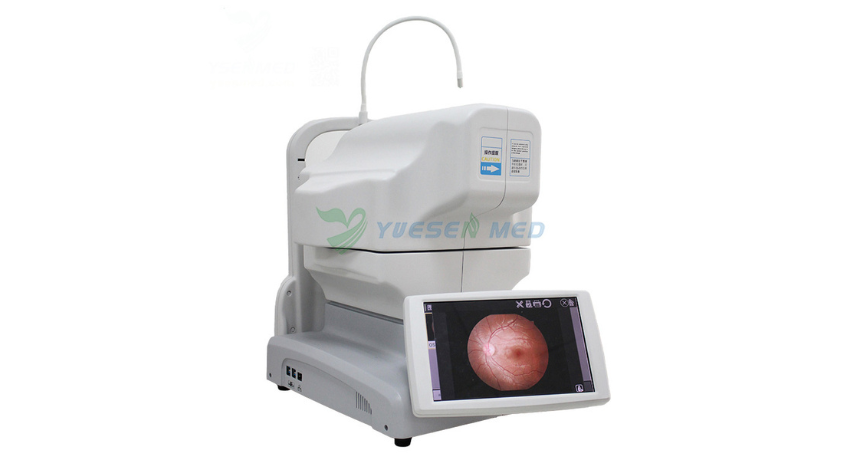Hot Products
X Ray Machine To Zimbabwe
x ray machine, 50KW x ray machine
Microscope To Malawi
Achromatic objectives: 4X、10X、40X(S), 100X(S、Oil) Wide field eyepiece: WF10X(WF16X for option) Eyepiece head: Sliding binocular head inclined at 45° Stage: Double layer mechanical stage size 140X140mm, moving range 75X45mm Focusing: Coaxial coarse and
Color Doppler Trolley System To Somalia
Color Doppler Trolley System To Somalia
Automated Hematology Analyzer To Peru
High quality Automated Hematology Analyzer (3-part differential) with cheap price
Mastering the Art of Separation: A Deep Dive into Gas Chromatography Techniques
Views : 910
Update time : 2024-02-20 17:03:00
Gas chromatography, often regarded as the wizardry of analytical chemistry, stands as an unparalleled tool in separating complex mixtures with precision. This article will be your guide, unraveling the intricacies of gas chromatography techniques. From the fundamentals to advanced methodologies, we'll explore the science behind this analytical marvel that has become indispensable in various industries.

Understanding Gas Chromatography: A Brief Overview
Before we delve into the techniques, let's establish a foundation. Gas chromatography is a technique used to separate and analyze compounds within a complex mixture. It involves the use of a mobile phase (gas) that carries the sample through a stationary phase (column). The separation occurs based on the compounds' affinity to the stationary phase, leading to distinct peaks in the chromatogram.
The Anatomy of Gas Chromatography Equipment
Gas chromatography equipment may seem like a scientific maze at first glance, but breaking it down simplifies the process. The system comprises a sample injector, column, detector, and data analysis software. The sample injector introduces the mixture into the system, and as it passes through the column, separation occurs. The detector identifies compounds, and the data analysis software interprets the results, providing a comprehensive view of the sample composition.
Gas Chromatography Techniques: A Comprehensive Guide
1. Gas-Solid Chromatography (GSC)
In GSC, the stationary phase is a solid material, providing high resolution for compounds with low vapor pressures. This technique is effective for separating volatile compounds but may face challenges with non-volatile substances.
2. Gas-Liquid Chromatography (GLC)
GLC employs a liquid stationary phase coated onto an inert solid support. This technique excels in separating a wide range of compounds, making it a versatile choice for many applications, including environmental analysis and drug testing.
3. High-Performance Liquid Chromatography (HPLC)
Although technically not gas chromatography, HPLC is worth mentioning for its efficiency in separating compounds in liquid samples. It's often used in tandem with gas chromatography for a more comprehensive analysis.
4. Gas Chromatography-Mass Spectrometry (GC-MS)
Combining gas chromatography with mass spectrometry enhances the analytical power. GC-MS identifies compounds based on their mass-to-charge ratio, providing both separation and qualitative analysis in one.
5. Two-Dimensional Gas Chromatography (2D-GC)
To address the complexity of some mixtures, 2D-GC adds another dimension to separation. This technique improves resolution and allows for the identification of compounds that might co-elute in conventional GC.
Applications Across Industries
Gas chromatography finds applications across diverse industries. In pharmaceuticals, it ensures the purity of drugs. Environmental monitoring relies on GC to detect pollutants. In the food and beverage industry, it guarantees the quality and safety of products. Understanding these applications emphasizes the widespread impact of gas chromatography on our daily lives.
Overcoming Challenges: Perplexity in Gas Chromatography
The road to mastery is paved with challenges. Perplexity in gas chromatography can arise from various factors, such as column bleed, ghost peaks, or baseline noise. Addressing these challenges requires a combination of expertise and an understanding of the intricacies of the specific technique employed.
Burstiness: Pushing the Boundaries of Gas Chromatography
Gas chromatography is not a static field; it's marked by constant innovation. Burstiness in this context refers to the dynamic advancements in technology and methodologies. The integration of artificial intelligence in data analysis, novel stationary phase materials, and miniaturization of equipment exemplify the burstiness in gas chromatography, ensuring it remains at the forefront of analytical techniques.
Keeping it Conversational: How Gas Chromatography Speaks to Us
Imagine gas chromatography as a language, with each peak in the chromatogram telling a unique story about the sample. The peaks converse with analysts, revealing the composition and characteristics of the mixture. This conversational aspect adds a human touch to the analytical process, transforming it from a series of data points to a dialogue with the sample.
Analogies and Metaphors: Gas Chromatography as a Symphony
Picture gas chromatography as a symphony of separation. Each compound plays its distinct note, and the chromatogram is the musical score. The conductor, represented by the analyst, guides the ensemble to create a harmonious separation, allowing us to appreciate the intricacies of the composition.
Conclusion: Mastering the Analytical Symphony
In conclusion, mastering the art of separation through gas chromatography involves understanding the techniques, embracing the challenges, and staying attuned to the burstiness of advancements. Gas chromatography is more than a scientific method; it's a symphony of compounds waiting to be deciphered. As we navigate through its techniques, applications, challenges, and innovations, we find ourselves in a continual process of mastering the analytical symphony that is gas chromatography.
FAQ:
How does gas chromatography work in separating compounds within a mixture?
Gas chromatography separates compounds based on their affinity to a stationary phase within a column. As the sample is carried by a mobile phase (gas), different compounds interact differently with the stationary phase, leading to distinct peaks in the chromatogram.
What are the key components of a gas chromatography system?
A typical gas chromatography system consists of a sample injector, column, detector, and data analysis software. The sample injector introduces the mixture, the column facilitates separation, the detector identifies compounds, and the software interprets and presents the data.
Can gas chromatography be used for liquid samples?
While gas chromatography primarily deals with gas samples, High-Performance Liquid Chromatography (HPLC) is employed for liquid samples. However, gas chromatography can still be used in conjunction with mass spectrometry for a more comprehensive analysis of liquid samples.
How does Two-Dimensional Gas Chromatography (2D-GC) enhance separation?
2D-GC adds an extra dimension to separation, improving resolution and allowing for the identification of compounds that might co-elute in traditional gas chromatography. This advanced technique provides a more detailed analysis of complex mixtures.
What are the main challenges faced in gas chromatography, and how can they be addressed?
Challenges in gas chromatography include column bleed, ghost peaks, and baseline noise. Addressing these issues requires a combination of expertise and careful optimization of conditions, such as adjusting temperature and pressure, using proper column maintenance, and ensuring a clean injection system. Regular calibration and validation procedures are also essential for reliable results.

Understanding Gas Chromatography: A Brief Overview
Before we delve into the techniques, let's establish a foundation. Gas chromatography is a technique used to separate and analyze compounds within a complex mixture. It involves the use of a mobile phase (gas) that carries the sample through a stationary phase (column). The separation occurs based on the compounds' affinity to the stationary phase, leading to distinct peaks in the chromatogram.
The Anatomy of Gas Chromatography Equipment
Gas chromatography equipment may seem like a scientific maze at first glance, but breaking it down simplifies the process. The system comprises a sample injector, column, detector, and data analysis software. The sample injector introduces the mixture into the system, and as it passes through the column, separation occurs. The detector identifies compounds, and the data analysis software interprets the results, providing a comprehensive view of the sample composition.
Gas Chromatography Techniques: A Comprehensive Guide
1. Gas-Solid Chromatography (GSC)
In GSC, the stationary phase is a solid material, providing high resolution for compounds with low vapor pressures. This technique is effective for separating volatile compounds but may face challenges with non-volatile substances.
2. Gas-Liquid Chromatography (GLC)
GLC employs a liquid stationary phase coated onto an inert solid support. This technique excels in separating a wide range of compounds, making it a versatile choice for many applications, including environmental analysis and drug testing.
3. High-Performance Liquid Chromatography (HPLC)
Although technically not gas chromatography, HPLC is worth mentioning for its efficiency in separating compounds in liquid samples. It's often used in tandem with gas chromatography for a more comprehensive analysis.
4. Gas Chromatography-Mass Spectrometry (GC-MS)
Combining gas chromatography with mass spectrometry enhances the analytical power. GC-MS identifies compounds based on their mass-to-charge ratio, providing both separation and qualitative analysis in one.
5. Two-Dimensional Gas Chromatography (2D-GC)
To address the complexity of some mixtures, 2D-GC adds another dimension to separation. This technique improves resolution and allows for the identification of compounds that might co-elute in conventional GC.
Applications Across Industries
Gas chromatography finds applications across diverse industries. In pharmaceuticals, it ensures the purity of drugs. Environmental monitoring relies on GC to detect pollutants. In the food and beverage industry, it guarantees the quality and safety of products. Understanding these applications emphasizes the widespread impact of gas chromatography on our daily lives.
Overcoming Challenges: Perplexity in Gas Chromatography
The road to mastery is paved with challenges. Perplexity in gas chromatography can arise from various factors, such as column bleed, ghost peaks, or baseline noise. Addressing these challenges requires a combination of expertise and an understanding of the intricacies of the specific technique employed.
Burstiness: Pushing the Boundaries of Gas Chromatography
Gas chromatography is not a static field; it's marked by constant innovation. Burstiness in this context refers to the dynamic advancements in technology and methodologies. The integration of artificial intelligence in data analysis, novel stationary phase materials, and miniaturization of equipment exemplify the burstiness in gas chromatography, ensuring it remains at the forefront of analytical techniques.
Keeping it Conversational: How Gas Chromatography Speaks to Us
Imagine gas chromatography as a language, with each peak in the chromatogram telling a unique story about the sample. The peaks converse with analysts, revealing the composition and characteristics of the mixture. This conversational aspect adds a human touch to the analytical process, transforming it from a series of data points to a dialogue with the sample.
Analogies and Metaphors: Gas Chromatography as a Symphony
Picture gas chromatography as a symphony of separation. Each compound plays its distinct note, and the chromatogram is the musical score. The conductor, represented by the analyst, guides the ensemble to create a harmonious separation, allowing us to appreciate the intricacies of the composition.
Conclusion: Mastering the Analytical Symphony
In conclusion, mastering the art of separation through gas chromatography involves understanding the techniques, embracing the challenges, and staying attuned to the burstiness of advancements. Gas chromatography is more than a scientific method; it's a symphony of compounds waiting to be deciphered. As we navigate through its techniques, applications, challenges, and innovations, we find ourselves in a continual process of mastering the analytical symphony that is gas chromatography.
FAQ:
How does gas chromatography work in separating compounds within a mixture?
Gas chromatography separates compounds based on their affinity to a stationary phase within a column. As the sample is carried by a mobile phase (gas), different compounds interact differently with the stationary phase, leading to distinct peaks in the chromatogram.
What are the key components of a gas chromatography system?
A typical gas chromatography system consists of a sample injector, column, detector, and data analysis software. The sample injector introduces the mixture, the column facilitates separation, the detector identifies compounds, and the software interprets and presents the data.
Can gas chromatography be used for liquid samples?
While gas chromatography primarily deals with gas samples, High-Performance Liquid Chromatography (HPLC) is employed for liquid samples. However, gas chromatography can still be used in conjunction with mass spectrometry for a more comprehensive analysis of liquid samples.
How does Two-Dimensional Gas Chromatography (2D-GC) enhance separation?
2D-GC adds an extra dimension to separation, improving resolution and allowing for the identification of compounds that might co-elute in traditional gas chromatography. This advanced technique provides a more detailed analysis of complex mixtures.
What are the main challenges faced in gas chromatography, and how can they be addressed?
Challenges in gas chromatography include column bleed, ghost peaks, and baseline noise. Addressing these issues requires a combination of expertise and careful optimization of conditions, such as adjusting temperature and pressure, using proper column maintenance, and ensuring a clean injection system. Regular calibration and validation procedures are also essential for reliable results.
Related News
Read More >>
 Good quality images by YSDR-VET320 DR system please Thai vets.
Good quality images by YSDR-VET320 DR system please Thai vets.
May .19.2024
Another 32kW veterinary DR system YSDR-VET320 has been successfully installed in a vet clinic in Thailand and quality images please the vets.
 YSENMED YSBT-200 transport infant incubators delivered to a hospital in Philippines
YSENMED YSBT-200 transport infant incubators delivered to a hospital in Philippines
May .18.2024
5 units of YSENMED YSBT-200 transport infant incubators have been delivered to a hospital in Philippines and doctors are very happy with the quality and service.
 YSENMED veterinary equipment set up a in new vet clinic in Spain
YSENMED veterinary equipment set up a in new vet clinic in Spain
May .17.2024
YSENMED veterinary equipment including stainless vet cages, cat condos, dog kennels, vet treatment table, lab working benches have been set up in a new vet clinic in Spain.
 Through the Lens: Understanding the Role of Auto Fundus Camera in Ophthalmology
Through the Lens: Understanding the Role of Auto Fundus Camera in Ophthalmology
May .17.2024
Let's delve into the fascinating world of auto fundus cameras and explore their indispensable role in modern ophthalmic practice.




